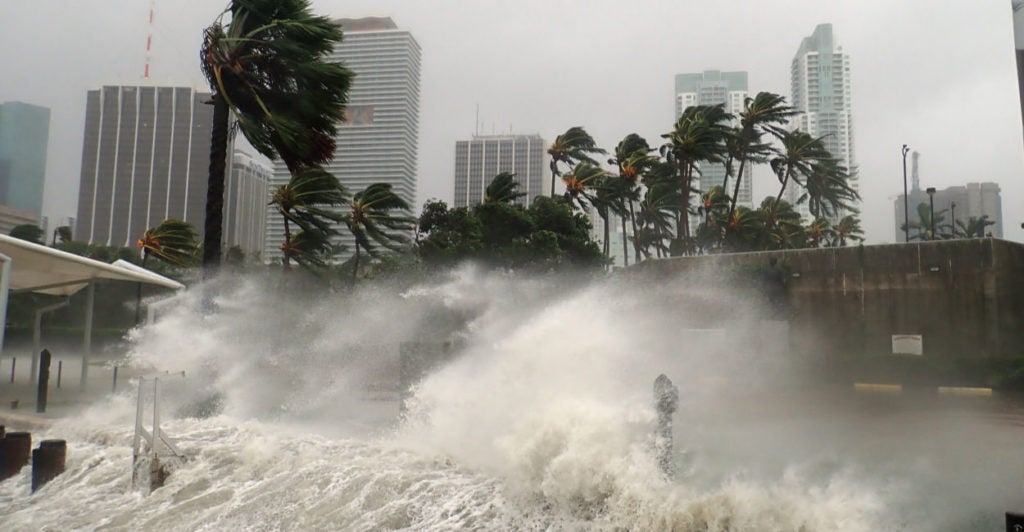June 1 marked the beginning of the hurricane season. The National Oceanic and Atmospheric Administration projects a 60% chance of an “above normal” hurricane season in the Atlantic this year, which is not welcome news after months of responding to COVID-19.
The forecast includes a chance of 13-19 named storms, 6-10 hurricanes, and 3-6 major hurricanes. In addition, the National Interagency Fire Center warns western states to monitor for increased fire potential during the summer months due to the overall warm and dry weather, prolonged drought patterns, and the buildup of hazardous dry vegetation.
In normal years, the Federal Emergency Management Agency emphasizes that states and localities need to prepare and be ready for disasters. In this exceptional year, such actions cannot be overemphasized.
States and localities have developed a growing reliance on federal response and funding when local and regional natural disasters occur. It is an irresponsible and financially unsustainable posture. Experts have long called for more preparedness and self-reliance on the part of states and localities. The COVID-19 national pandemic and our current hurricane season highlight this glaring, time-sensitive need.
The national response to COVID-19 has already stretched FEMA and federal assistance. States, localities, and the private sector have learned during the response that it is in their interest to be creative, plan for contingencies, identify alternative resources and delivery methods, and execute. They are able to recover more quickly when they are self-sufficient.
Self-sufficiency includes setting aside and preserving sufficient funding for disaster response and recovery.
The National Coronavirus Recovery Commission recommends that states and local governments “set aside a minimum of two months of operating expenditures, or roughly 16 percent of expenditures, for times of crisis, as suggested by the Government Finance Officers Association. States with historically more volatile revenues or expenditures should have higher balances.”
Despite the demands that the COVID-19 response has placed on FEMA, the agency has continued to plan for this hurricane season and other non-pandemic emergencies.
FEMA operates under the framework of “locally executed, state managed, and federally supported incident response.” This framework sums up the principle described above—states and localities lead in emergencies, the federal government supports and provides guidance.
Accordingly, in May, FEMA released the COVID-19 Pandemic Operational Guidance for the 2020 Hurricane Season to help emergency managers and public health officials, as well as NGOs and the private sector, prepare for the hurricane season during the ongoing COVID-19 response.
This guidance is meant to be actionable and to serve as a baseline for helping public officials prepare for response and recovery operations with the added complexities posed by the pandemic. It includes numerous checklists, public messaging guidance, and resource information.
Although the guidance focuses on the 2020 hurricane season, it can be applied to other disaster operations during the COVID-19 response, including no-notice events like flooding and wildfires.
The guidance advises emergency managers to anticipate circumstances that may require life-saving and life-sustaining efforts. Assistance programs should be updated with online or remote processes, assessments, inspections, and adapted program delivery in areas with COVID-19 outbreaks. Emergency managers should review existing continuity of operations programs and begin “increasing planning and posturing with a focus on key changes necessitated by the COVID-19 environment.”
The guidance also urges the use of social distancing to protect the health and safety of survivors, emergency managers, and other response and recovery personnel. This will likely alter sheltering plans, commodity distribution, and establishment of disaster facilities.
On June 1, FEMA released an Exercise Starter Kit for Preparedness in a Pandemic to help state and local emergency managers prepare for hurricane season and other hazards in the COVID-19 pandemic environment.
On the same day, Pete Gaynor, administrator of FEMA, sent a letter to the nation’s emergency managers that provides recommendations to states and localities to ensure that their emergency plans are updated, valid, and considerate of COVID-19 complexities.
Gaynor states, “I ask each local, county, territorial tribal, and state emergency manager, as well as private businesses, use the actionable guidance and resources offered in the COVID-19 Pandemic Operational Guidance for the 2020 Hurricane Season document to ensure you’re ready.”
He also reminds emergency managers that Fiscal Year 2020 Emergency Management Performance Grant Program funds (up to $355.1 million) may be used to “ensure adequate funding and planning for preparedness and response efforts” during the COVID-19 pandemic.
He advises that the COVID-19 supplemental funds to the grant program (an additional $100 million) should be used to:
- Review, modify, and/or execute logistics and enable contracts to increase capability to stockpile and provide necessary resources needed to stabilize lifelines.
- Modify plans to account for limited travel options and increased time needed for the evacuation of health care facilities in a COVID-19 environment.
- Identify mass care and shelter options that meet Centers for Disease Control and Prevention guidance and mitigate risks to communities and the most vulnerable citizens.
- Emphasize collection, analysis, and sharing of data in accordance with applicable legal protections and processes to strengthen decision-support capabilities.
As Gaynor closes his letter, he states emergency managers need to “coordinate, problem solve, and act.” He asks them “to lead, innovate, and be resourceful, especially in the face of a potentially demanding summer and early fall.” These characteristics of state and local self-reliance have long been in demand.
In the year of the COVID-19 response, they are essential.
